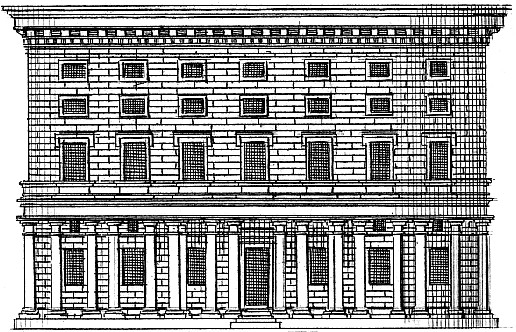Domenico di Baccio d'Agnolo Baglioni
architect and sculptor; b. 1511.
Domenico was the second son of Baccio d' Agnolo. He was considered by Vasari a more talented architect than his brother Giuliano. He built the Niccolini, now Buturlin, Palace in Florence, and finished the Torrigiani Palace begun by his father.
Jean Bailly (II)
architect and sculptor; d. August 19, 1559.
Jean, II, was the son of Jean, I, and was son-in-law of Jean de Soissons. May 17, 1532 he was made maître de l'œuvre of the Cathedral of Troyes.
Guillaume le Breton
architect; d. 1550.
Guillaume and Jacques (d. 1550) le Breton appear to have been associated in their work. In 1532 and again between 1541 and 1550 they were employed in the construction of the chateau of Villers Cotterets (Aisne, France). They were probably brothers of Gilles le Breton.
Nicolas Gaudinet or Godinte
architect.
In 1532 he replaced Guérard Cardin as supervising architect of the cathedral of Sens. In 1535 he built the lantern of the stone tower and in 1537 the vaults near the Chapelle S. Croix.
Michel Lalye
architect and sculptor.
November 5, 1532, Lalye succeeded Martin Chambiges as architect of the cathedral of Beauvais, Oise, France. He finished the vaulting and the southern portal. April 24, 1534, he made the first proposals for the erection of an immense spire at the intersection of the choir and the transcept of the cathedral. This extraordinary work was designed and carried by his successor, Jean Wast (II).
Pierre Lemercier
architect.
The founder of an important family of French architects and the earliest architect of the great church of S. Eustache in Paris, the first stone of which was laid August 19, 1532. The interesting adaptation of Renaissance details to Gothic forms which characterizes this building originated with him. September 25, 1552, he was commissioned to finish the high tower of the church of S. Maclou at Pontoise, Seine-et-Oise, France. His work at Pontoise and Paris was continued by his son, Nicolas Lemercier. The architects of S. Eustache were of the same family, and preserved the unique style of the building throughout. The façade is later. (See Hardouin-Mansart de Jouy, J.)
Fra Giovanni Anoiolo da Montorsoli
sculptor and architect; b. 1507; d. August, 1563.
He received his name from the village of Montorsoli, near Florence, where he was born. He was attached to the works at S. Peter's, where he attracted the attention of Michelangelo, whom he assisted in the completion of the Medici tombs in the new sacristy of S. Lorenzo at Florence. The statue of S. Cosirno, now in the sacristy, was made by him. In October, 1530, he entered the religious order of the Servi dell' Annunziata, in Florence. Returning to Rome, he was employed by Clement VII (Pope 1523-1534), to restore antique statues at the Belvedere, Vatican. Montorsoli also assisted Michelangelo on the tomb of Julius II. A visit to Paris was without important results. About 1543, for the great admiral, Andrea Doria, he began the decoration of the church of S. Matteo, Genoa, including the altar and the tomb of the admiral. He assisted also in the decoration of the Doria palace. In September, 1547, Montorsoli was called to Messina, Sicily, to construct the great fountain of the Piazza del Duomo. This was followed by the fountain of the port of Messina.
| |
1532.08.19 the first stone was laid of the church of S. Eustache, Paris

Principal façade of the Massimi Palace, called delle Colonne at Rome, built in 1532, according to Ferrerio, after the designs of Balthazar Peruzzi of Sienna, born in 1481, and died in 1536. He was at the same time painter, engineer, and architect.
Seroux
| |
|